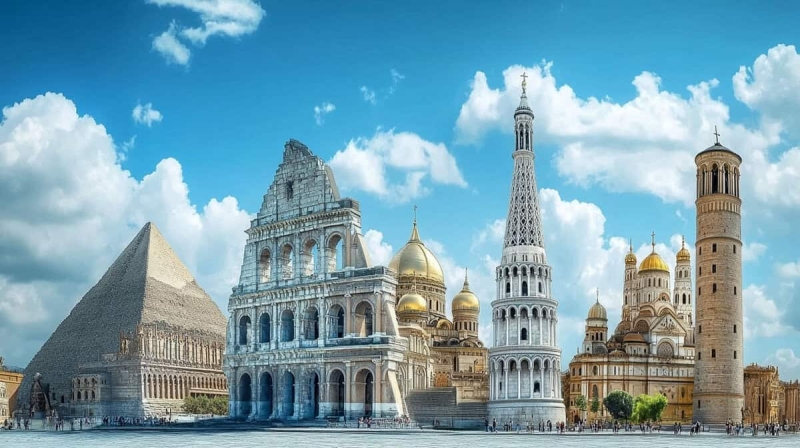Contents
- 1 What Are the Most Famous Buildings in the World—And Why Your Opinion Doesn’t Matter Until You’ve Been There
- 2 Which Buildings Should Architects Visit—A Prescription for Professional Humility
- 3 What Makes a Building Architecturally Significant—Beyond the Award Citations
- 4 The Crisis of Secondhand Architecture
- 5 What Are the Best Architectural Destinations for Travel—A Strategic Approach
- 6 The Manifesto: Why This Matters Now

Luca Moretti
Stop pretending your Instagram feed of construction details makes you a complete architect. While you’re obsessing over the perfect joint detail or the latest parametric plugin, you’re missing something fundamental. Famous buildings aren’t just tourist attractions—they’re architectural education in its purest form. The 10 most iconic buildings of modern architecture didn’t become legendary through theoretical discourse. They earned their status by transforming how we understand space, culture, and human experience. Yet here we are, a generation of architects who can render photorealistic facades but have never felt the weight of Tadao Ando’s concrete or experienced the disorienting verticality of architectural landmarks in New York City.
When did we become so comfortable learning about architecture secondhand? When did we decide that Cuban architecture’s landmark buildings were less important than our project deadlines? This isn’t about taking selfies in front of the Eiffel Tower. This is about recognizing that architectural landmarks are active laboratories where theory meets reality, where the messy complexities of human behavior intersect with design intent.
Every iconic building you’ve never visited represents a gap in your professional education—a conversation you’re not equipped to join, a reference you can’t authentically make, a spatial experience you can only approximate. Your next design project depends on closing these gaps. Your clients deserve architects who understand space not just as abstract concept but as lived experience.
What Are the Most Famous Buildings in the World—And Why Your Opinion Doesn’t Matter Until You’ve Been There
You need to understand why certain buildings rise above the rest. The most famous buildings in the world didn’t achieve their status through marketing campaigns or architectural magazines. They earned it through sustained human engagement across decades, sometimes centuries. They became famous because they solved problems, created experiences, or pushed boundaries in ways that continue to resonate today.
The Pantheon: Why Photos Can’t Capture Spatial Genius
You think you know the Pantheon because you’ve seen it in textbooks? You’ve analyzed its proportions, memorized its construction techniques, perhaps even modeled it in 3D. But you don’t know the Pantheon until you’ve stood beneath that oculus during a Roman thunderstorm, watching water cascade through the opening while tourists scramble for cover. You don’t understand its genius until you’ve experienced how that single opening transforms a massive concrete dome into something that breathes, that connects earth to sky in ways your sections could never capture.
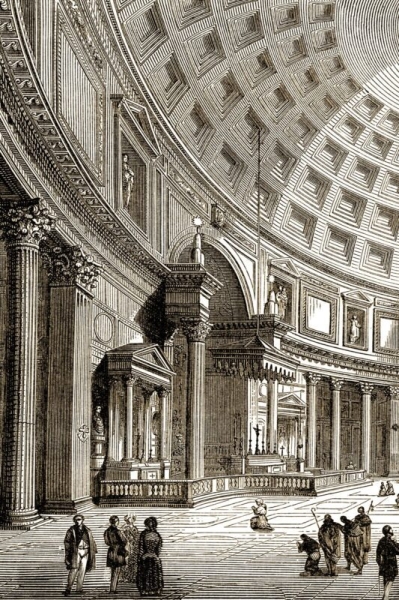
Contemporary Landmarks That Demand Physical Encounter
The famous buildings around the world that consistently appear on every architectural pilgrimage list—from the Hagia Sophia to Fallingwater, from the Sagrada Familia to the Sydney Opera House—earned their status through something your computer screen can’t deliver: embodied experience. These aren’t just pretty pictures or interesting case studies. They’re spatial phenomena that engage all your senses simultaneously, creating memories that inform every design decision you’ll make for the rest of your career.

Consider how Heatherwick Studio’s Vessel challenges everything we thought we knew about public space. You can study its honeycomb structure, analyze its circulation patterns, debate its urban impact—but until you’ve climbed its interconnected staircases, felt the vertigo of its perspectives, and observed how people actually use its spaces, you’re missing the point entirely.
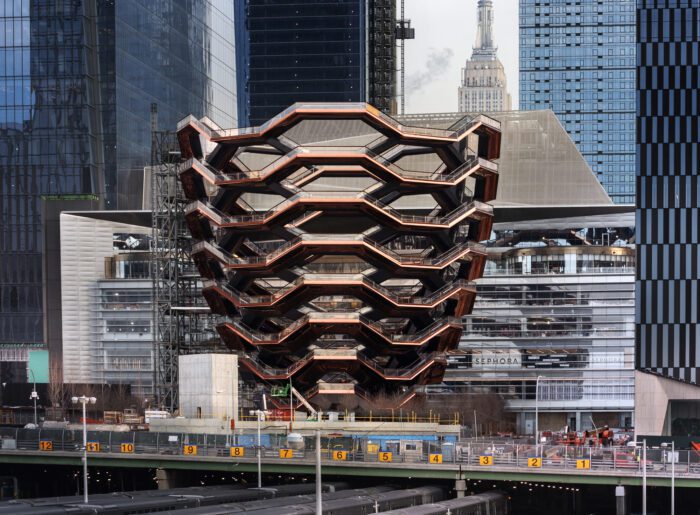
The Reality Behind Architectural Icons
The building’s controversy isn’t just about aesthetics or accessibility. It’s about how architecture shapes behavior in ways that can’t be predicted from plans. When you experience these spaces firsthand, you begin to understand the gap between design intent and human reality. You see how weather affects materials, how light changes throughout the day, how people adapt spaces for uses the architect never imagined.
Which Buildings Should Architects Visit—A Prescription for Professional Humility
Every building you design is a conversation with every building that came before it. When you create a facade, you’re responding to Louis Kahn’s treatment of light. When you plan a circulation sequence, you’re building on centuries of spatial innovation. But if you’ve never experienced these precedents firsthand, you’re trying to join a conversation where you can only repeat what others have said.
Beyond the Obvious Monuments
The buildings every architect should visit aren’t just the obvious monuments. Yes, you need to understand how the Parthenon’s columns create rhythm and proportion. But you also need to experience how famous landmarks with secret spaces reveal the gap between public facade and private reality. You need to understand how buildings adapt, how they age, how they surprise even their creators.
The Spatial Vocabulary Crisis
Start with the uncomfortable truth: most contemporary architecture is mediocre because its creators have limited spatial vocabulary. They’re designing from a narrow reference library, copying forms they’ve seen online rather than understanding the experiential principles that make spaces work. The architects creating genuinely transformative work—from Peter Zumthor to Diébédo Francis Kéré—are those who have deeply studied how great buildings perform in reality, not just in theory.
Building Your Architectural Reference Library
Think of famous buildings as your professional library. Each one you visit adds another volume to your collection of spatial understanding. The Gothic cathedrals teach you about vertical drama and filtered light. Modernist houses show you how to connect interior and exterior. Contemporary museums demonstrate how to create flexible, adaptable spaces. Traditional vernacular buildings reveal time-tested responses to climate and culture.

You wouldn’t try to write a novel without reading great literature. You wouldn’t compose music without studying the masters. Yet somehow, architects think they can create meaningful spaces without experiencing the buildings that have shaped human consciousness for millennia.
What Makes a Building Architecturally Significant—Beyond the Award Citations
Architectural significance isn’t determined by critics or awards committees. It’s earned through time, through countless human interactions, through the building’s ability to remain relevant across changing contexts. The iconic buildings that truly matter are those that continue to teach us something new each time we encounter them.
The Barcelona Pavilion: When Less Becomes More
Take the Barcelona Pavilion. Every architecture student knows its canonical photographs, understands its material palette, recognizes its influence on modern architecture. But the building’s true significance becomes clear only when you experience its spatial ambiguity firsthand—how the same space can feel both intimate and expansive, how reflections create infinite layers of depth, how Mies van der Rohe used simple materials to create complex phenomenological effects.
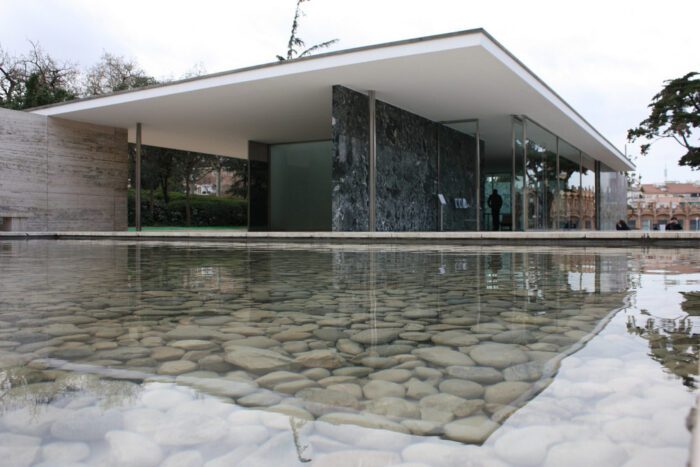
Why Photographs Miss the Point
This is why awesome cutouts of famous landmarks might be clever graphic design, but they miss the point entirely. Architecture isn’t about iconic silhouettes. It’s about how buildings create experiences, how they frame views, how they make you feel small or powerful, contemplative or energized. The buildings that achieve architectural significance do so because they engage with fundamental questions about human experience—questions that can only be answered through direct encounter.
The Test of Time
Buildings become architecturally significant when they survive the test of time and use. They adapt to changing needs while maintaining their essential character. They inspire other architects while remaining unique. They create memorable experiences for countless visitors while serving their primary function effectively. This kind of significance can’t be manufactured or marketed—it emerges from the complex relationship between design intent and human reality.
The Crisis of Secondhand Architecture
We’re living through a crisis of secondhand architecture. Young designers learn about buildings through filtered images, processed through social media algorithms that prioritize visual impact over spatial intelligence. They study plans and sections without understanding how spaces actually perform. They memorize theoretical concepts without experiencing the physical reality those concepts describe.
The Instagram Effect on Design
This isn’t just about missing out on great architecture—it’s about creating a generation of architects who design from a fundamentally impoverished understanding of what buildings can do. When your primary reference is Instagram, you design for Instagram. When your understanding of spatial experience comes from renderings, you create spaces that work in renderings but fail in reality.
The Consequences in Our Cities
The result is cities filled with buildings that photograph well but feel empty, developments that look impressive from the street but create no meaningful sense of place, public spaces that serve social media better than they serve actual communities. We’ve prioritized the image of architecture over the experience of architecture, and our built environment reflects this misplaced emphasis.
Look at New York landmarks in deserted landscapes—even when stripped of their urban context, great buildings maintain their power. They don’t depend on perfect lighting or carefully curated views. They work because they understand something fundamental about human needs and spatial experience.
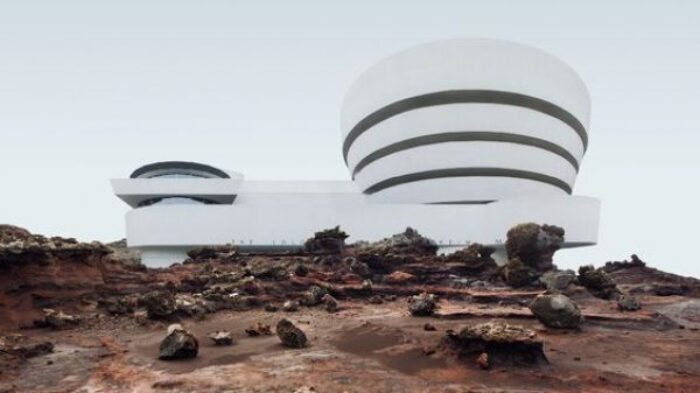
What Are the Best Architectural Destinations for Travel—A Strategic Approach
Not all architectural tourism is created equal. The best architectural destinations are those that offer dense concentrations of significant buildings across multiple periods and scales. Cities like Barcelona, where you can experience Gothic architecture, Modernist masterpieces, and contemporary innovations within walking distance. Places like Tokyo, where traditional wooden structures coexist with cutting-edge contemporary architecture, creating conversations across centuries.
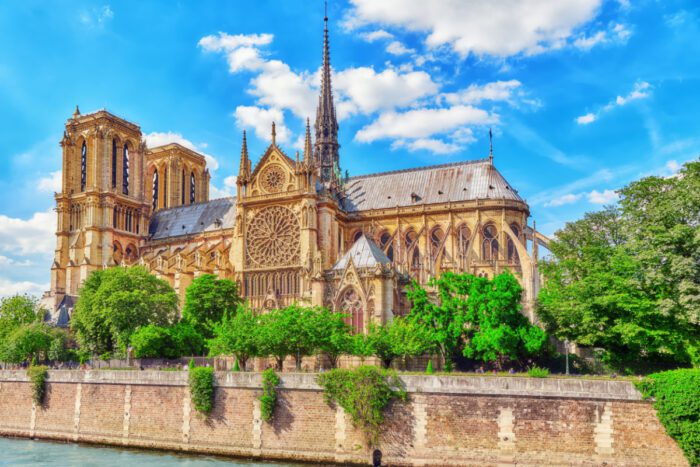
Beyond the Obvious Architectural Capitals
Don’t limit yourself to the obvious architectural capitals. Some of the most important lessons come from unexpected places—from the adaptive reuse projects transforming post-industrial cities, from the innovative social housing experiments in Latin America, from the climate-responsive architecture emerging in rapidly developing regions.

Approaching Architecture as Research
The key is approaching architectural travel as research, not tourism. Visit buildings at different times of day. Observe how they age and weather. Talk to people who use them regularly. Understand their broader urban context. Document not just their formal qualities but their social and environmental performance.
The Methodology of Architectural Pilgrimage
Develop a systematic approach to experiencing architecture. Before you visit, research the building’s history, design intent, and critical reception. During your visit, spend time in different spaces, observe how light changes, notice how people move through the building. After your visit, reflect on what you learned and how it might inform your own work.
This isn’t about collecting trophy visits or checking boxes on a list. It’s about building a deep, personal understanding of how great architecture works. Each building you visit should change how you think about space, materials, light, and human experience.
The Manifesto: Why This Matters Now
In an era of increasingly virtual architectural education and practice, direct experience of significant buildings becomes more crucial, not less. As we develop new technologies for visualizing and designing space, we need deeper understanding of how great spaces actually work. As we face unprecedented environmental and social challenges, we need to learn from buildings that have successfully responded to similar pressures in the past.
The Virtual Reality Paradox
Virtual reality can show you what a building looks like, but it can’t show you how it smells, how the materials feel under your hand, how the acoustics shape conversation, how the climate affects your comfort. These sensory experiences are crucial to understanding how architecture really works. They’re the difference between knowing about a building and knowing a building.
Your Professional Responsibility
The famous buildings to visit aren’t just items on a cultural bucket list—they’re active components of your professional education. Every building you experience firsthand expands your spatial vocabulary, deepens your understanding of material performance, and enriches your ability to create meaningful places for others.
Even when famous landmarks are in the wrong places, they maintain their essential character. Good architecture transcends its immediate context because it addresses universal human needs and experiences. This is what you need to understand—not just how buildings look, but how they work at the deepest level.
The Call to Action
Stop making excuses about time and money. Stop pretending that virtual tours and high-resolution photography can substitute for embodied experience. Stop accepting a secondhand understanding of architecture when the real thing is waiting to teach you. The buildings are there. The lessons are waiting. The only question is whether you’re serious enough about architecture to meet them halfway.
The future of our built environment depends on designers who have felt the weight of great architecture in their bones, who understand how buildings can transform consciousness, who recognize that creating meaningful places requires more than technical skill—it requires wisdom earned through direct encounter with the spaces that have shaped human experience across cultures and centuries.
This is your manifesto. This is your call to action. This is why every architect’s bucket list should be measured not in buildings designed, but in buildings experienced. The architecture is waiting. What are you waiting for?
Tags: architectural landmarksarchitectural pilgrimagearchitectural tourismdesign educationfamous buildings to visitIconic buildingsprofessional developmentspatial experience

Luca Moretti
Luca Moretti is a content strategist with a foundation in urban design and architecture. Based in Milan, he focuses on writing that bridges aesthetics, material culture, and everyday spatial experiences.
